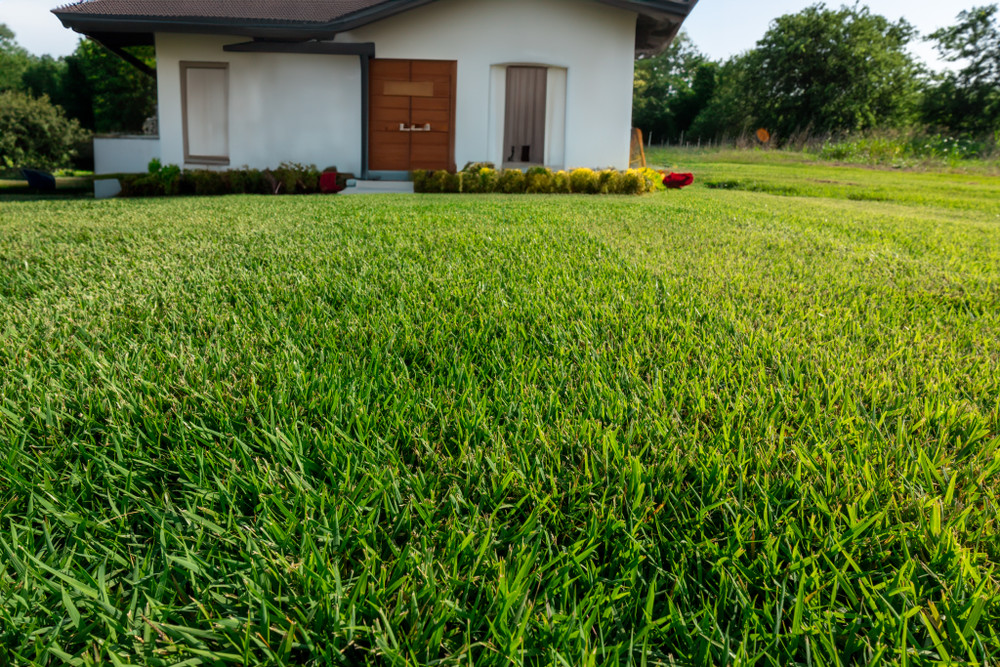Ultimate Guide to Choosing the Right Sod
Posted by Farm2Yard on Jul 16th 2025
Ultimate Guide to Choosing the Right Sod
Ready to transform your yard into a lush, green oasis? It all starts with choosing the right sod. Whether you're building a brand-new lawn or reviving a tired one, selecting the best grass for your climate, sunlight, and lifestyle is the key to long-term success. This ultimate guide will walk you through everything you need to know—so you can stop guessing and start growing a lawn you’ll love. Let’s find the perfect sod for your home!
If you’re thinking “I don’t have time to read this”, just skip to the reference chart at the bottom or call the experts at 1-855-4-USASOD.
Top 5 Factors to Consider When Choosing Sod
1. Climate Compatibility
The most critical decision is choosing sod that thrives in your regional climate, specifically whether you need a warm-season or cool-season grass.
✅ How to Determine Your Climate Zone:
- Cool-Season Zones (Northern US): Winter temps routinely drop below 0–20°F, with mild summers (average highs 60–75°F).
- Warm-Season Zones (Southern US): Winters are mild (above 20°F), and summers are hot (average highs 80–95°F).
- Transition Zone (Central US): Experiences both hot summers and cold winters—making it one of the trickiest regions for sod selection.
☀️ Cool-Season Grasses (Best for Northern climates):
- Kentucky Bluegrass
- Tall Fescue
- Perennial Ryegrass
☀️ Warm-Season Grasses (Best for Southern climates):
- Bermuda
- St. Augustine
- Zoysia
- Centipede
Note: Zoysia grass performs well in both warm climates and some parts of the Transition Zone due to its cold tolerance relative to other warm-season grasses.
2. Sunlight Exposure
Map how much sunlight your lawn receives throughout the day. Grass has specific sunlight needs:
|
Sunlight Level |
Hours of Direct Sunlight |
Ideal Sod Types |
|
Full Sun |
6–8+ hrs/day |
Bermuda, Kentucky Bluegrass, Zoysia |
|
Partial Sun/Shade |
4–6 hrs/day |
Tall Fescue, St. Augustine, some Zoysia cultivars |
|
Dense Shade |
<4 hrs/day |
Very few sod types; Tall Fescue or shade-tolerant mixes |
Reminder: No grass thrives in deep shade. If your space gets less than 4 hours of sunlight, consider alternative groundcovers.
3. Foot Traffic
Foot traffic refers to how much physical activity your lawn will endure. Here's a breakdown:
|
Traffic Level |
Activities |
Ideal Grasses |
|
High Traffic |
Kids playing, dogs running, sports, frequent entertaining |
Bermuda, Zoysia, Tall Fescue, Ryegrass |
|
Low Traffic |
Decorative lawns, occasional walking, light foot use |
St. Augustine, Centipede, some Bluegrass |
Note: High-traffic grasses typically recover quickly from wear and form dense mats that resist damage.
4. Water Requirements & Drought Tolerance
Different sod types have different water needs depending on their drought resistance. Use local annual rainfall as a guideline—but remember, these numbers include both natural rainfall and irrigation.
|
Water Category |
Annual Water Needs |
Grass Types |
Notes |
|
Drought-Tolerant |
20–30 inches/year |
Bermuda, Zoysia, Centipede |
Can handle more if drainage is good; less frequent watering needed |
|
Moderate |
30–40 inches/year |
Tall Fescue, Perennial Ryegrass, St. Augustine* |
St. Augustine prefers moist soil but tolerates short dry spells |
|
Water-Needy |
40+ inches/year or consistent irrigation |
Kentucky Bluegrass, some St. Augustine |
Needs regular watering during hot, dry months—even in wetter climates |
*St. Augustine has moderate drought tolerance but may require regular irrigation in dry, sandy soils.
✅ Can Sod Handle More Rain Than Listed?
Yes—most grass types can tolerate more than their maximum rainfall needs, as long as the soil drains well.
5. Maintenance Level
Maintenance refers to the ongoing work required to keep your lawn healthy and attractive. This includes mowing frequency, fertilization, watering needs, and weed/pest control.
|
Maintenance Level |
What It Involves |
Example Grasses |
|
High |
Weekly mowing, fertilizing every 4–6 weeks, frequent watering, potential dethatching, pest/disease monitoring |
Hybrid Bermuda, elite Kentucky Bluegrass |
|
Moderate |
Biweekly mowing, seasonal fertilizer, occasional watering, some weed control |
Tall Fescue, St. Augustine, Zoysia |
|
Low |
Mow every 2–3 weeks, minimal fertilization, infrequent watering, tolerant of imperfect conditions |
Centipede, some turf-type Tall Fescues |
Matching Your Region to the Right Grass Type
Sod Type Comparison by Region
Here’s a quick reference chart showing which grass types are best for your climate and needs:
|
Grass Type |
Warm or Cool Season |
Sun Needs |
Traffic Tolerance |
Maintenance |
Notable Strengths |
Weaknesses |
|
Bermuda |
Warm |
Full Sun |
High |
High |
Heat, drought, and traffic tolerant |
Poor shade tolerance |
|
Centipede |
Warm |
Partial Sun |
Low |
Low |
Low-maintenance option for acidic soil |
Poor cold/traffic tolerance |
|
Kentucky Bluegrass |
Cool |
Full Sun |
Moderate |
High |
Lush color, self-repairs |
Poor heat/shade tolerance |
|
Perennial Ryegrass |
Cool |
Full Sun |
High |
Moderate |
Quick establishment |
Low cold tolerance |
|
St. Augustine |
Warm |
Partial Sun |
Low |
Moderate–High |
Best warm-season shade tolerance |
Susceptible to pests and cold |
|
Tall Fescue |
Cool |
Sun–Partial Shade |
High |
Moderate |
Heat-adaptable, shade tolerant |
Can be coarse (older varieties) |
|
Zoysia |
Warm |
Sun–Partial Shade |
High |
Moderate |
Dense growth, traffic & drought tolerant |
Slow growth and recovery |
Final Thoughts
Choosing the right sod is about balancing climate, sunlight, soil, foot traffic, and your lifestyle. With the right match, your lawn can thrive with minimal stress and maximum curb appeal. The experts at USA Sod can help you through your sod journey. Call us at 1-855-4-USASOD to talk about the right sod for you!
In upcoming posts, we’ll do a deep dive into each sod type—exploring characteristics, best use cases, and care tips—so you can find the perfect fit.

